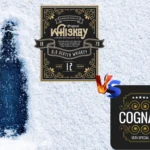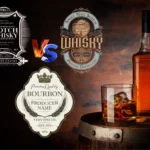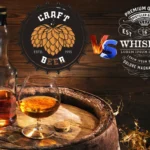We’ll take a look at the most common query “what is whisky made of” or what ingredients are involved in giving whisky distinctive taste.
Whisky is made from crushing mature grains, commonly grain, rye, or wheat. The pound is then refined to make the soul. Depending on the kind of bourbon being made, the refining system might differ somewhat, yet the essential advances are by and large similar.
What Comprises Whisky?
Whisky creation includes different steps, from the real materials through the maturing system. These components might affect the taste and fragrance of the completed item.
Water, grain, and yeast make up the principal parts. The last option is significant because it empowers numerous whiskies to accomplish the fitting liquor focus by adjusting the strength of the whisky after refining.
Grain
Grain, wheat, and rye are a couple of the single-cultivated grass assortments that fall under the umbrella name “grain.” It is likewise a normal part of numerous food sources, including pieces of bread and morning oats.
Protein and fiber are both plentiful in grains. The supplements calcium, iron, and folic acid are plentiful in them. The majority of your grain admissions ought to come from whole-grain sources.
Whisky is a popular cocktail produced using grains. It is created by refining a combination of grains (called the mash bill), water, and yeast. This system may fundamentally change how whisky tastes and can likewise change contingent upon the bourbon’s geographic beginning, style, and custom.
Malted grain is the grain that is most frequently utilized in Scotch whisky, while wheat and maize are likewise frequently used. The method involved with malting makes the grain sprout and delivers proteins that empower yeast to mature long-chain starches into straightforward sugars.
While wheat and rye are often utilized instead of grain to make American whiskies, they should be malted to remove the sugars required for the refining system. The grain should be absorbed in boiling water to energize the improvement of proteins.
A sort of whisky called “mixed whisky” is created by mixing whiskies from numerous refineries. Similar to the ridiculously well-known whiskey, most blends combine single malt and grain whiskies. These two fixings together give whisky its particular taste.
Water
The most successive material used to make whisky is water, which significantly impacts each step of the assembly system. It supports the extraction of sugars from the crushed grain, fills in as a cooling specialist during refining, and, most fundamentally, is added during barrel development to reduce the strength of the sulfur.
Water is an imperative part of all life since it is polar as a particle and connects successfully with other polar substances. What’s more, it fills in as a fundamental dis solvable for a wide range of synthetic compounds, both natural and inorganic. Subsequently, it is a fundamental part of numerous modern cycles, including whisky production.
Warm water is added to the grain during the pounding process to start removing the sugars. The last soul is made by warming and refining the resultant fluid wort.
Every refinery utilizes an alternate sort of source water, like a stream, stream, loch, or spring, and this might fundamentally affect the tangible qualities of the completed whisky. This is particularly valid for Scotch whisky, where the unforgiving waterways of the Highlands, Islay, and swamps frequently yield lighter spirits, while the delicate waters of Speyside habitually give heavier spirits.
It’s urgent to remember that the end result’s flavor completely depends upon you and your own inclinations. You can improve the flavors and aromas of your whisky by adding water, yet ultimately it depends on you how much and at what force.
Yeast
Alcohols and different synthetics are created by yeast, an organism, during the maturation cycle. By means of this natural interaction, it is utilized to make bread, brew, wine, and numerous other things. It is quite possibly one of the most seasoned and tame species.
Yeast is added to a mix of water and malted grain, known at times as “wort,” to begin the maturation cycle for assembling whisky. A definitive kind of whisky is impacted by the amount of yeast utilized, the length of time the fluid is matured, as well as its temperature and gravity.
The sort of grain used to produce the whisky likewise influences the flavor; rye is more peppery, while maize will generally has a better, syrupy taste. Then again, grain offers a flavor that is more toasted and toffee-like.
In any case, how these grains are dealt with through the refining process decides how they taste. Before being squashed in a pound-tun, the grains might be steamed to give the whisky a nutty, exquisite, or fruity taste.
While yeast is an extremely clear step toward the development of whisky, it fundamentally affects the completed item. During the maturation cycle, it might transform carbohydrates into liquor and create a wide assortment of flavors, which can bring about various whiskies.
Aging
Without a trace of oxygen, microbes, growth, and yeast separate carbs during maturation. Notwithstanding numerous different things, it is a significant stage in the formation of liquor, yogurt, and kimchi.
The method involved with maturing is fundamental for the flavor of whisky. The last flavor is extraordinarily affected by the yeast strain utilized. To find the one that most precisely captures their planned preferences, distillers frequently test-drive an assortment of yeast strains.
During the maturation cycle, yeast switches the wort’s carbs over completely to ethanol and carbon dioxide. Different substances that are delivered by it, including esters, fuels, sulfur, and carbonyls, likewise influence the final flavor.
Both the actual yeast and the lactic corrosive microbes, which begin to become dynamic in the last phases of the maturing system, are the wellsprings of these synthetic substances. More esters, acids, and long-chain alcohols are created as a result of a progression of substance processes that the lactic corrosive micro-organisms put into high gear.
These outcomes indicate the development of a more complex soul than the one that yeast initially delivers. The intricacy of the whisky will increment with the length of the maturation.
Regardless, a few refineries have started diminishing their maturation lengths as of late in an effort to help create. As an outcome, their whiskies may not be pretty much as rich or scrumptious as they previously were. This is an unfortunate pattern since maturation is fundamental to making the best whiskies.
Refining
Heating up a blend of fluids to separate liquor is the interaction known as refining. It is a part of making cocktails, including those whisky, rum, and vodka.
Grain (corn, rye, wheat, or malted grain), yeast, and water are joined to make whisky. To deliver the specific kind of whisky, these parts are refined and trailed by maturing.
The pound charge, a recipe for matured grains joined with water, is the most vital phase in the refining system. The starch in the grains is then cooked to change into sugars that yeast can age.
The squash is cooked, cooled, and given one more yeast infusion to restart the maturation interaction. Yet again, this technique creates a fluid that looks like a lager, which is then refined to add more liquor.
The end result is placed into barrels for maturing after the ideal ABV has been accomplished. Congeners in alcohol will change and advance throughout this period, upgrading the whisky flavor.
The completed thing is accordingly bundled and made available for purchase to clients. To make whisky more tempting to clients, flavors and variety, and different options might be added. These additional preferences are controlled and are restricted to 2.5% of the volume of the eventual outcome.
Maturing
Whisky maturing is an extended system that changes the soul’s taste and appearance. The time it takes for the liquor to change tones and take on scents could go from 90 days to a year.
Ethanol and other terrible substances in youthful whisky are taken out during age. This works on the beverage’s perfection and drinking experience.
Albeit a few distillers like to allow their spirits to mature for the vast majority of years in barrels, others utilize more surprising strategies to rush the cycle. These maturing strategies range from adding wood chips to utilizing more modest barrels and different things.
Turning the barrels is another methodology frequently utilized to expand the contact between the whisky and the wood. This improves the probability of an intricate flavor character arising.
Additionally, a few maturing procedures utilize a few sorts of wood to make particular flavors and scents. For example, oaks that are not regularly used for developing spirits in different countries are utilized to develop Japanese whiskies.
The maturing system of the whisky is additionally impacted by the climate in which it is put away. Whiskey ordinarily ages in dry areas though Scotch ages in moist settings.
While the developing system consumes most of the day and may be expensive, it is fundamental to delivering top-notch whisky. It gives the drink its trademark flavor and increases customer interest in it.
Also, learn
- Best Reasonable/Cheap Whiskies to Drink in 2023 (Top Picks)
- Cognac vs Whisky: Which is Great For Wellbeing?
- Whisky: Benefits, Side Effects and More
- Whiskey Vs Bourbon Vs Scotch
- The Difference Between Rum and Whisky Explained
- Difference Between Whisky and Cognac
- Whiskey Vs Beer Calories – Which One is Better and Preferable?







